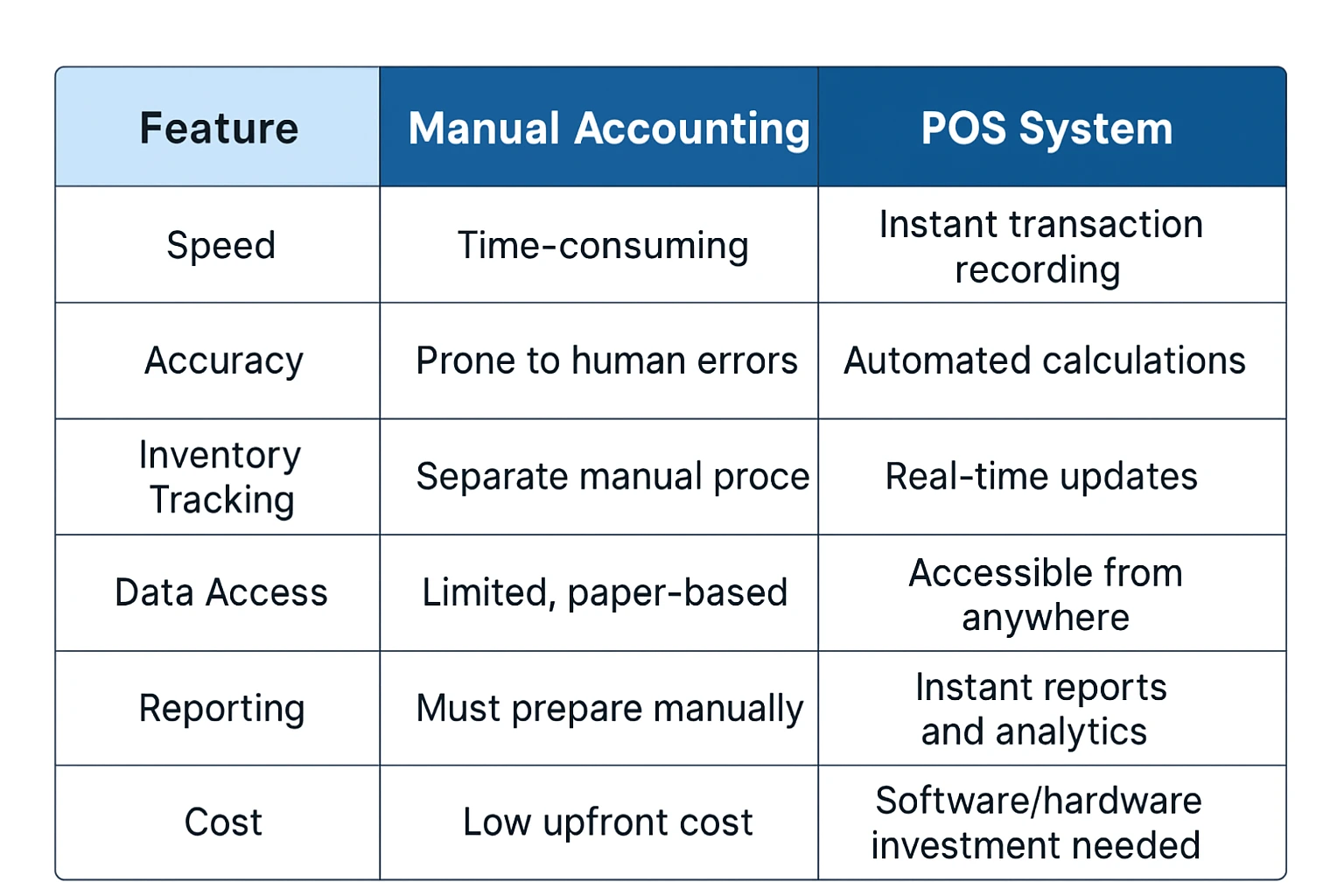POS vs Manual Accounting Methods: Which One Should You Choose?
Aug 12, 2025Book a demo with one of our experts!
- Get a guided tour
- Let's do the setup together
- 100% Free
In the fast-paced world of business, accurate accounting is critical. Whether you run a retail store, a restaurant, or an online business, you have two main options for handling your accounts:
- Manual accounting methods – using paper ledgers or spreadsheets.
- Point of Sale (POS) systems – technology-driven tools that automatically track sales, payments, and inventory.
This article compares POS vs manual accounting methods to help you decide which works best for your business.
What Is Manual Accounting?
Manual accounting is the traditional way of recording transactions using paper books, registers, or basic spreadsheet software like Excel.
Common manual accounting tasks include:
- Recording daily sales in a ledger
- Calculating totals by hand or using a calculator
- Filing paper receipts and invoices
- Manually preparing tax and financial reports
What Is a POS System?
A Point of Sale (POS) system is software (often paired with hardware) that processes customer transactions and automatically updates your sales, payments, and sometimes inventory records.
Modern POS systems offer features like:
- Automatic sales tracking
- Real-time inventory updates
- Integrated payment processing
- Tax calculations and reporting
- Customer data management
POS vs Manual Accounting: Key Differences

Advantages of Manual Accounting
- Low or no upfront cost
- No dependency on technology
- Useful for very small businesses with limited transactions
Disadvantages of Manual Accounting
- Slower data entry and calculations
- Higher chance of errors
- Difficult to manage multiple locations or channels
- Time-consuming tax preparation
Advantages of Using a POS System
- Time Savings – Transactions and reports are generated automatically
- Accuracy – Reduces mistakes caused by manual entry
- Real-Time Insights – Track sales trends instantly
- Integration – Can connect with accounting software, inventory systems, and payment gateways
- Scalability – Easily manage multiple stores or sales channels
When to Switch from Manual to POS
You should consider moving to a POS system if:
- You’re processing more than 20–30 transactions per day
- You sell across multiple locations or online channels
- You struggle with tracking inventory accurately
- You want faster, data-driven decision-making
While manual accounting may work for very small operations, POS systems offer speed, accuracy, and real-time insights that are essential for growing businesses.
Switching to a POS system can help you save time, reduce errors, and focus on what really matters — growing your business.

